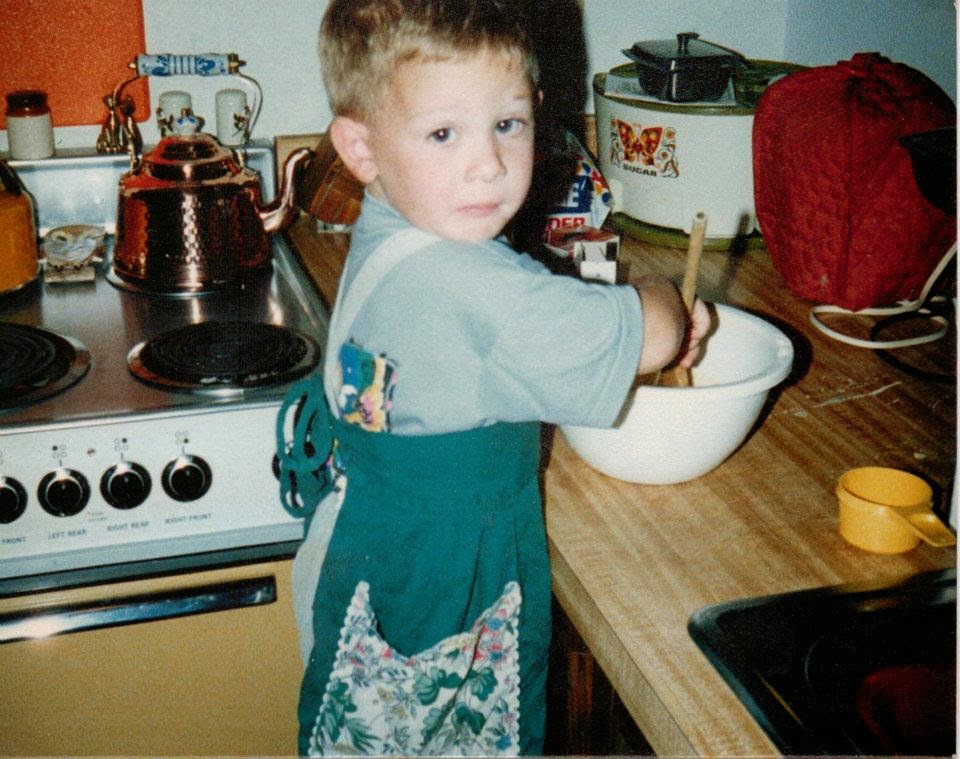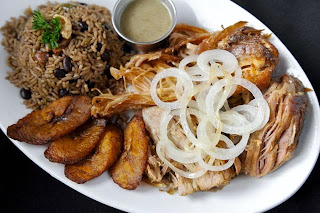Vietnamese Pho Bo is an amazing, miracle dish, that if given a little love will become one of your favorite foods of all time. It is time consuming, but the results are well worth it. This is just one type of Pho with beef and beef broth. When you combined all the fresh ingredients with the thinly sliced raw beef, and hot, amazingly aromatic broth, heaven in your mouth will become a reality. As requested here is a very good recipe for Pho Bo. Make sure you follow the steps all the way. I hope everyone will enjoy this dish. If you have any questions about how to make it feel free to contact me on Facebook at Back2TheTable.
Tips
1. Start with good bones: Avoid neck bones. Look for knuckle bones and leg bones that have alot of marrow. Make sure the bones are as fresh as possible.
2. Aim for clear broth- This is done by parboiling the bones and rinsing them. It is also achieved by gently simmering the broth. The less agitation the better.
3. You must char the onion and ginger with skin on. Do not skip this step.
4. Use yellow rock sugar found at asian markets or palm sugar.
5. Do not ever dilute the broth
6. Leave some fat
7. Serve it very hot
Pho Bo Recipe
·
Makes 8 satisfying
(American-sized) bowls
·
For the broth:
2 medium yellow onions (about 1 pound total)
4-inch piece ginger (about 4 ounces)
5-6 pounds beef soup bones (marrow and knuckle bones)
5 star anise (40 star points total)
6 whole cloves
3-inch cinnamon stick
1 pound piece of beef chuck, rump, brisket or cross rib roast, cut into
2-by-4-inch pieces (weight after trimming)
1 1/2 tablespoons salt
4 tablespoons fish sauce
1 ounce (1-inch chunk) yellow rock sugar (duong phen; see Note)
·
For the
bowls:
1 1/2-2 pounds small (1/8-inch wide) dried or fresh banh pho noodles ("rice sticks'' or Thaichantaboon)
1/2 pound raw eye of round, sirloin, London broil or tri-tip steak, thinly
sliced across the grain (1/16 inch thick; freeze for 15 minutes to make it
easier to slice)
1 medium yellow onion, sliced paper-thin, left to soak for 30 minutes in a bowl
of cold water
3 or 4 scallions, green part only, cut into thin rings
1/3 cup chopped cilantro (ngo)
Ground black pepper
·
Optional
garnishes arranged on a plate and placed at the table:
Sprigs of spearmint (hung lui) and Asian/Thai basil (hung que)
Leaves of thorny cilantro (ngo gai)
Bean sprouts (about 1/2 pound)
Red hot chiles (such as Thai bird or dragon), thinly sliced
Lime wedges
·
Prepare the
pho broth:
·
Char onion
and ginger. Use
an open flame on grill or gas stove. Place onions and ginger on cooking grate
and let skin burn. (If using stove, turn on exhaust fan and open a window.)
After about 15 minutes, they will soften and become sweetly fragrant. Use tongs
to occasionally rotate them and to grab and discard any flyaway onion skin. You
do not have to blacken entire surface, just enough to slightly cook onion and
ginger.
·
Let cool. Under warm water, remove charred onion skin; trim and
discard blackened parts of root or stem ends. If ginger skin is puckered and
blistered, smash ginger with flat side of knife to loosen flesh from skin.
Otherwise, use sharp paring knife to remove skin, running ginger under warm
water to wash off blackened bits. Set aside.
·
Parboil
bones. Place
bones in stockpot (minimum 12-quart capacity) and cover with cold water. Over
high heat, bring to boil. Boil vigorously 2 to 3 minutes to allow impurities to
be released. Dump bones and water into sink and rinse bones with warm water.
Quickly scrub stockpot to remove any residue. Return bones to pot.
·
Simmer
broth. Add 6 quarts water to
pot, bring to boil over high heat, then lower flame to gently simmer. Use ladle
to skim any scum that rises to surface. Add remaining broth ingredients and
cook, uncovered, for 1 1/2 hours. Boneless meat should be slightly chewy but
not tough. When it is cooked to your liking, remove it and place in bowl of
cold water for 10 minutes; this prevents the meat from drying up and turning
dark as it cools. Drain the meat; cool, then refrigerate. Allow broth to
continue cooking; in total, the broth should simmer 3 hours.
·
Strain the pho broth
through fine strainer. If desired, remove any bits of gelatinous tendon from
bones to add to your pho bowl. Store tendon with cooked beef. Discard solids.
·
Use ladle to skim as
much fat from top of the pho broth as you like. (Cool it and refrigerate it
overnight to make this task easier; reheat befofe continuing.) Taste and adjust
flavor with additional salt, fish sauce and yellow rock sugar. The pho broth
should taste slightly too strong because the noodles and other ingredients are
not salted. (If you've gone too far, add water to dilute.) Makes about 4
quarts.
·
Assemble pho
bowls:
·
The key is to be
organized and have everything ready to go. Thinly slice cooked meat. For best
results, make sure it's cold.
·
Heat the pho
broth and ready the noodles. To
ensure good timing, reheat broth over medium flame as you're assembling bowls.
If you're using dried noodles, cover with hot tap water and soak 15-20 minutes,
until softened and opaque white. Drain in colander. For fresh rice noodles,
just untangle and briefly rinse in a colander with cold water.
·
Blanch
noodles. Fill 3-
or 4-quart saucepan with water and bring to boil. For each bowl, use
long-handle strainer to blanch a portion of noodles. As soon as noodles have
collapsed and lost their stiffness (10-20 seconds), pull strainer from water,
letting water drain back into saucepan. Empty noodles into bowls. Noodles
should occupy 1/4 to 1/3 of bowl; the latter is for noodle lovers, while the
former is for those who prize broth.
·
If desired, after
blanching noodles, blanch bean sprouts for 30 seconds in same saucepan. They
should slightly wilt but retain some crunch. Drain and add to the garnish
plate.
·
Add other
ingredients. Place
slices of cooked meat, raw meat and tendon (if using) atop noodles. (If your
cooked meat is not at room temperature, blanch slices for few seconds in hot
water from above.) Garnish with onion, scallion and chopped cilantro. Finish
with black pepper.
·
Ladle in
broth and serve. Bring broth
to rolling boil. Check seasoning. Ladle broth into each bowl, distributing hot
liquid evenly so as to cook raw beef and warm other ingredients. Serve your pho
with with the garnish plate.
·
Note: Yellow rock sugar (a.k.a. lump sugar) is sold in one-pound
boxes at Chinese and Southeast Asian markets. Break up large chunks with
hammer.
·
Variations: If you want to replicate the splendorous options
available at pho shops, head to the butcher counter at a Vietnamese or Chinese
market. There you'll find white cords ofgan (beef tendon) and thin pieces of nam (outside flank, not flank steak).
While tendon requires no preparation prior to cooking, nam should be rolled and
tied with string for easy handling. Simmer it and the beef tendon in the
cooking broth for two hours, or until chewy-tender.
·
Airy book tripe (sach)
is already cooked when you buy it. Before using, wash and gently squeeze it
dry. Slice it thinly to make fringe-like pieces to be added to the bowl during
assembly. For beef meatballs (bo vien), purchase them in Asian markets
in the refrigerator case; they are already precooked. Slice each one in half
and drop into broth to heat through. When you're ready to serve, ladle them out
with the broth to top each bowl


